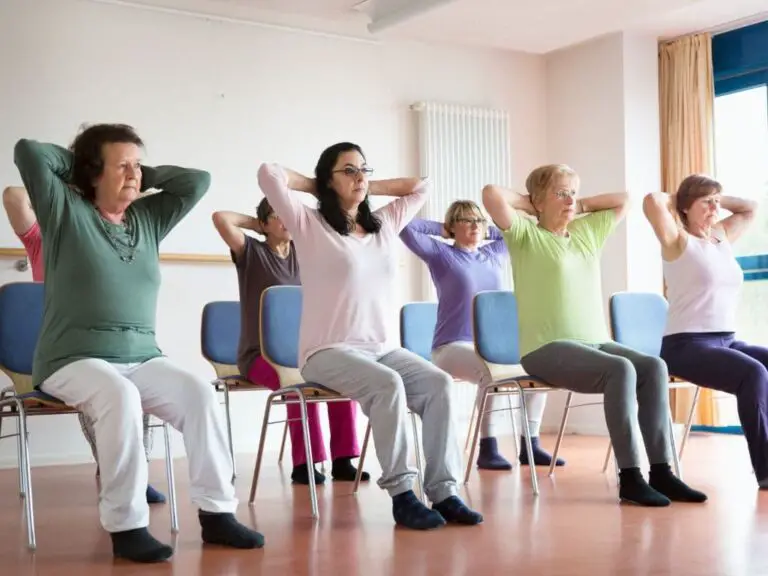Max Heart Rate by Age: Understanding Your Target Heart Rate Zone
Your maximum heart rate, or max HR, is the highest heart rate your body can safely achieve through exercise stress. It indicates the maximum rate at which your heart can pump oxygen-rich blood to your muscles during exercise.
The maximum heart rate (max HR) by age can be estimated using various formulas, the most common being 220 minus your age. For instance, a 40-year-old would have an estimated max HR of 180 beats per minute. However, this is a rough estimate and individual fitness levels and health conditions can influence the actual max HR.
Max heart rate is an important measurement in exercise prescription because it helps determine target zones for optimal cardiovascular conditioning. The more accurately you know your max heart rate, the better you can tailor your workout intensity to achieve fitness goals.

How to Calculate Your Max Heart Rate
There are a few different formulas used to estimate your max heart rate based on your age:
1. The 220-Age Formula
The simplest and most commonly used formula is 220 minus your age. For example, if you’re 40 years old, your estimated max HR would be 220 – 40 = 180 beats per minute (bpm).
This formula provides a rough estimate, but it has limitations. It overestimates max HR in older individuals and doesn’t account for individual variations in fitness. Still, it provides a decent starting point.
2. The Karvonen Formula
The Karvonen formula factors in resting heart rate (RHR) for a more personalized estimate:
Max HR = ((220 – Age) – Resting HR) x 0.7 + Resting HR
For example, a 40 year old with a RHR of 70 bpm would calculate their max HR as:
((220 – 40) – 70) x 0.7 + 70 = 162 bpm
This adjusts the max HR to account for RHR. Since fitter individuals tend to have lower RHRs, it avoids overestimating their max HRs. However, it still relies on the 220-age formula as a starting point.
3. The Tanaka Formula
Another more accurate formula is the Tanaka formula:
Max HR = 208 – (0.7 x Age)
Using the Tanaka formula, a 40 year old would have an estimated max HR of:
208 – (0.7 x 40) = 183 bpm
Research shows the Tanaka formula provides a more precise estimate across different age groups, especially for older individuals. However, it still only provides an approximation.
Max Heart Rate Chart by Age
Here is a chart of the estimated maximum heart rate by age according to the common 220-age formula:
| Age | Max Heart Rate |
|---|---|
| 20 | 200 bpm |
| 25 | 195 bpm |
| 30 | 190 bpm |
| 35 | 185 bpm |
| 40 | 180 bpm |
| 45 | 175 bpm |
| 50 | 170 bpm |
| 55 | 165 bpm |
| 60 | 160 bpm |
| 65 | 155 bpm |
| 70 | 150 bpm |
| 75 | 145 bpm |
| 80 | 140 bpm |
As shown, max heart rate declines with age as cardiovascular endurance and fitness naturally decrease. However, this chart just provides rough estimates. Your true max HR may be higher or lower.
Understanding Your Target Heart Rate Zone
Your target heart rate zone is the recommended heart rate range to optimize different aspects of cardiovascular fitness. It’s based on a percentage of your maximum heart rate.
Here are the five target zones and their benefits:
1. Warm-Up Zone (50-60% of Max Heart Rate)
This light intensity zone prepares your body for exercise by gradually raising your heart rate and increasing blood flow to muscles. It minimizes injury riskfrom jumping into more intense exercise while helping joints and muscles warm up.
2. Fat-Burning Zone (60-70% of Max Heart Rate)
This moderately intense zone maximizes the amount of fat your body uses for energy during exercise. Staying in this heart rate range for 30-60 minutes will burn more fat and help lose body fat.
3. Aerobic Zone (70-80% of Max Heart Rate)
The aerobic zone builds cardiovascular endurance by challenging your heart and lungs. Exercise in this zone for 20-40 minutes boosts stamina and lung capacity. But it’s still below the anaerobic threshold.
4. Anaerobic Zone (80-90% of Max Heart Rate)
Exercise in this intensely difficult zone is anaerobic, using carbohydrates instead of fat as fuel. Short, intense bursts of exercise in this zone increase speed and power, but lactic acid build-up causes fatigue quickly.
5. Maximum Effort Zone (90-100% of Max Heart Rate)
This all-out maximal zone is for short interval training of up to 5 minutes. It dramatically boosts athletic performance through rapid gains in speed and conditioning. But it can’t be sustained for long without complete exhaustion.
How to Use Your Max Heart Rate for Exercise
Knowing your max heart rate helps optimize exercise by providing target intensities. Here are some ways to utilize it in your workout routine:
1. Monitoring Your Heart Rate During Exercise
Wearing a heart rate monitor chest strap or smartwatch lets you track your heart rate during exercise. This allows you to see if you’re training in your optimal target zone for goals like fat loss or endurance.
2. Adjusting Your Exercise Intensity
If your heart rate is too high or low for your target zone, you can adjust the speed, resistance, or incline to reach the appropriate training zone. This helps fine-tune the intensity.
3. Planning Your Workout Routine
Design your cardio workouts around target heart rate zones. For example, warm-up for 5-10 minutes at 50-60% max HR, then sustain 60-70% max HR for 30 minutes for a fat-burning treadmill run.
You can also plan intervals, like 1 minute sprints at 90% max HR between 2 minutes of recovery at 70% max HR for anaerobic gains.
Factors That Can Affect Your Max Heart Rate
While age is the primary determiner of max HR, other factors can influence it:
1. Fitness Level
Well-conditioned athletes may have higher max heart rates than sedentary individuals of the same age. Improved cardiovascular fitness increases max HR.
2. Health Conditions
Heart conditions like arrhythmia can artificially limit max HR. Lung disease and asthma can also lower oxygen saturation, reducing max HR.
3. Medications
Certain medications like beta blockers are prescribed to intentionally lower max heart rate and reduce strain on the heart. Always consult your doctor about medications.
4. Altitude
Due to lower oxygen availability at high altitudes, max HR is reduced at elevations over 5,000 feet. Athletes training at altitude need to account for this.
5. Temperature
In very high temperatures, max HR may decrease by 10-15bpm as your body works to keep you cool. Hydration is key when exercising in heat.
6. Dehydration
If you’re dehydrated, your plasma volume and stroke volume are reduced. This lowers maximum HR. Maintain fluid intake before and during exercise.
When to Consult a Doctor Before Exercising
While most healthy adults can utilize target heart rate zones safely, you should consult your physician in certain cases, including:
1. Existing Health Conditions
If you have heart disease, hypertension, diabetes, lung disease, or other health conditions impacting the heart, lungs, or circulatory system, discuss exercise guidelines with your doctor.
2. Symptoms During Exercise
See a doctor if you ever experience alarming symptoms like chest tightness, irregular heart rhythms, dizziness or lightheadedness during exercise. These could indicate underlying medical issues.
3. Age and Fitness Level
Older adults who have been largely sedentary should have a medical exambefore significantly increasing exercise intensity. Unfit individuals shouldn’t use age-predicted max HR blindly without medical guidance.
Always build up your exercise regimen gradually while monitoring how your body responds. Understanding your max heart rate can help optimize your workouts for your age and fitness goals. But consult your physician before undertaking any new vigorous exercise programs.
Frequently Asked Questions
-
What is max heart rate by age?
The maximum heart rate (max HR) by age is the highest heart rate an individual can safely achieve during exercise, and it typically decreases with age. It’s commonly estimated using the formula 220 minus your age. For instance, a 40-year-old would have an estimated max HR of 180 beats per minute. However, factors like fitness level and health conditions can influence this number.
-
Is HIIT safe for seniors?
Is HIIT safe to do for elderly people? Regular HIIT is safe for seniors who are medically cleared to exercise. Research shows that HIIT is not associated with an increase in the risk of serious cardiac or musculoskeletal injury compared to moderate intensity exercise.
-
Can HIIT damage your heart?
Two new research published in Heart suggests that too intense exercise can increase the risk of a cardiac attack, or cause irregular heart beats later on in life.
-
What music BPM is good for exercise?
Start your aerobic exercise with upbeat music, at around 130 BPM (beats/minute), and then increase to about 150 BPM. She said that moderate aerobic speed is the best for most people.
-
What is the best beat to walk to?
Md Ansar Ali (Relationship and Mind Coach) says that the best BPM to walk and do other exercises is between 125-140 beats per hour. Studies have shown that music listening can improve performance.
-
What music should you listen to while working out?
Music with strong beats and fast music tends to be the best for you. Music can increase your heartbeat, which is a great way to exercise.
-
What is the newest exercise craze?
We expect that HIIT will continue to be a mainstay among the top 5 trends in 2014 and 2022. For working professionals, there is no better way than to do intense circuits for a full, non-gym workout.
-
What BPM should you run at?
Add your age to 220 in order to calculate your maximal heart rate. Athletes train between 50% and 70% of their maximum heart beat. If your max heart rate is 180 beats per minute, then your training zone should be 90 to 126 beats. To keep your heart rate in check during exercise, use a heart monitor.
-
Can I do HIIT with high blood pressure?
Studies after studies have shown that HIIT exercises improve blood pressure for people suffering from hypertension more than any other type of exercise. The HIIT method is very effective at reducing the resting heart beat and blood pressure of obese and overweight individuals.
-
What is a dangerously low heart rate when sleeping?
Bradycardia is generally defined as a heart beat that rests at 60 beats per hour (BPM). There are some exceptions. Deep sleep can cause your heart rate to drop below 60 beats per minute.






